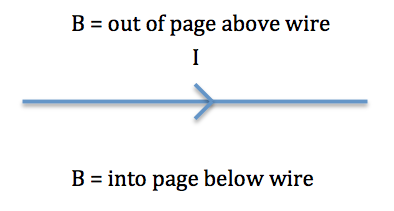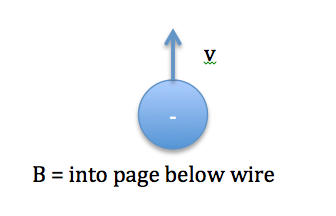- Joined
- Mar 14, 2013
- Messages
- 54
- Reaction score
- 0
Hello. Can somebody please explain this question to me? I am completely lost.
A high current power line is supported 10 m above ground and carries a current from West to East. A negatively charged balloon is released directly below the power line and begins to float straight up toward it. What is the direction of the magnetic force on the balloon due to the magnetic field surrounding the power line?
(A) North
(B) South
(C) East
(D) West
I get that when you point your right thumb in the direction of the current and curl your fingers, at the bottom of the wire the magnetic field points up (north). However, when I do the rule to find the magnetic force on the balloon I get the force coming out of the page? The answer is east, but I'm confused as to how that is. Any help with my reasoning with this would be appreciated.
A high current power line is supported 10 m above ground and carries a current from West to East. A negatively charged balloon is released directly below the power line and begins to float straight up toward it. What is the direction of the magnetic force on the balloon due to the magnetic field surrounding the power line?
(A) North
(B) South
(C) East
(D) West
I get that when you point your right thumb in the direction of the current and curl your fingers, at the bottom of the wire the magnetic field points up (north). However, when I do the rule to find the magnetic force on the balloon I get the force coming out of the page? The answer is east, but I'm confused as to how that is. Any help with my reasoning with this would be appreciated.


